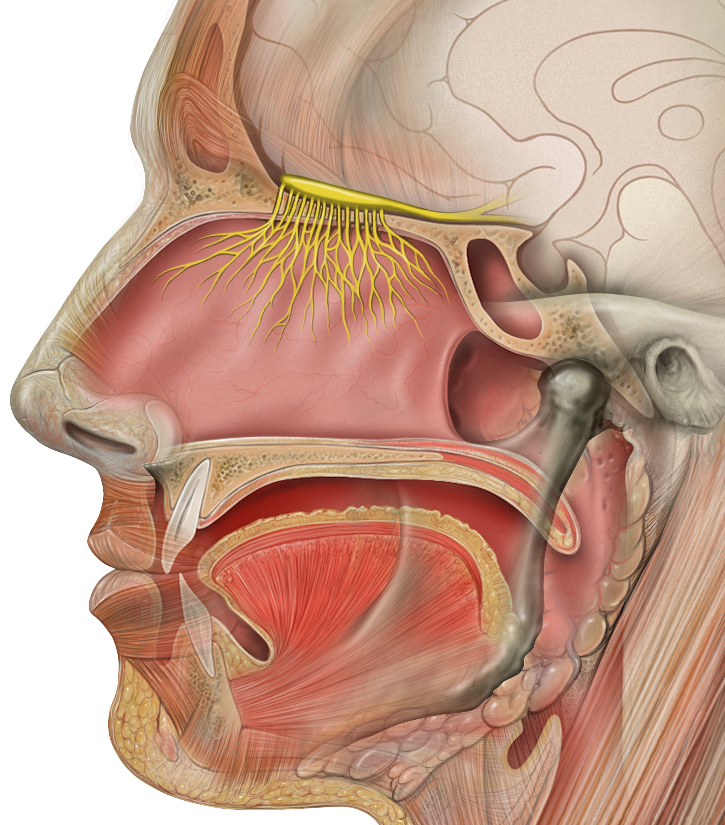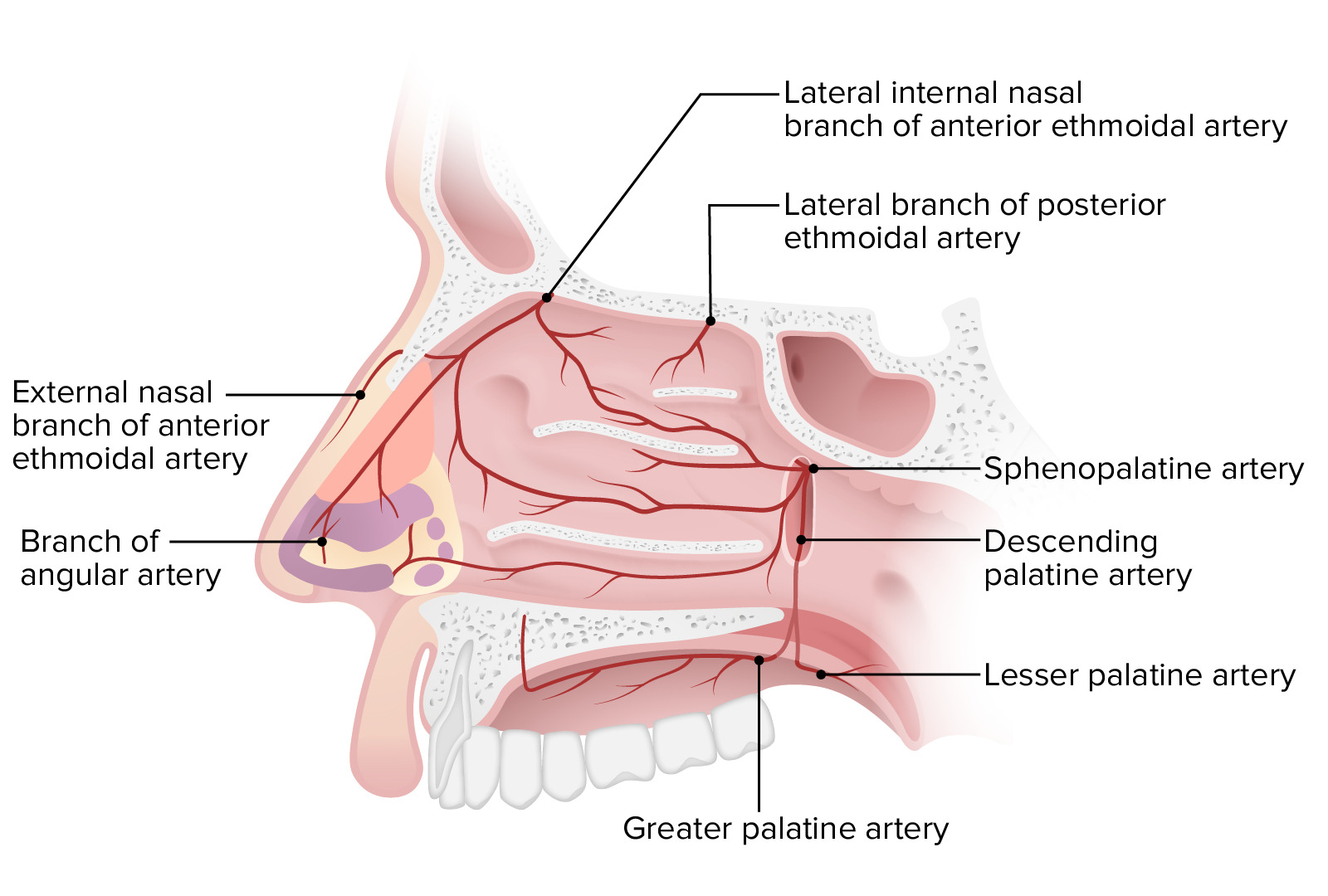Playlist
Show Playlist
Hide Playlist
Smell: Transduction and Integration
-
Slides 04 TasteSmell NervousSystem.pdf
-
Download Lecture Overview
00:00 Smell. 00:03 Smell is also a process in which we cake a molecule, which we call an odorant. 00:09 And we are going to sense what that odorant is. 00:13 For these process, we need to have first the molecule needs to enter the nasal cavity. 00:19 If then needs to coming close proximity with these odorant receptors. 00:24 And these process has to be put into a watery mucus solution. 00:31 So that odorant molecule needs to merge before you can use your olfactory sensors to determine what it smells like. 00:41 That information is then send back to the brain through the ethmoid bone and eventually to the olfactory tract. 00:49 The other cells that are important to think about on this kind of diagram are the mucus and serous secreting glands. 00:57 You need to produce a little bit of mucus in your epithelium of your nasal tract to be able to sense, smell an odorant. 01:10 How is this signal transduction work? Olfactory receptors are which they are many of them. 01:16 There are more than a hundred that have been discovered does far. 01:20 These are specialized G couple protein receptors. 01:24 And these protein responses have a special Gof sensory molecule that is released. 01:33 These sensory molecule once the odor that binds to it is a cyclic AMP stimulating molecule. 01:42 So these increases cyclic AMP within the cell. Cyclic AMP does a couple of things for us, it allows for calcium to rush in, because we have cyclic AMP gated calcium channels Cyclic AMP does several of things for us. 01:59 It allows for calcium to rush in because we have cyclic AMP gated calcium channels. 02:04 These cyclic AMP gated calcium channels then allow for other molecules such as chloride to exit the cell. 02:10 Further increasing the polarization therefore depolarization is a process with several stages. 02:19 Integration of Smell. As you know smells are complex. 02:24 There are a lot of different components to a smell. 02:26 You might have some intensity that usually means, there’s more odorant molecules or maybe certain types of odors are very potent to one particular person or another. 02:36 All these signals are sent back through the olfactory nerve. 02:40 But even though you have a hundred or more, a different sensors. 02:47 They may be in acting multiples with simply a normal smell. 02:52 So if you smell citrus, you are activating many of these odorant sensing cells. 02:59 Other particular smells that may have kind of a pungent in nature are activating that different sort of set of those odorant receptors as you stimulate varying amounts of these receptors. 03:13 You will get a global picture of how something smells. 03:18 So it’s not simply having one odorant molecule stimulating one receptor. 03:25 It’s a complex mixture of these odorants hiding different olfactory receptors.
About the Lecture
The lecture Smell: Transduction and Integration by Thad Wilson, PhD is from the course Neurophysiology.
Included Quiz Questions
Binding of an odorant to an odorant receptor on olfactory cells results in which of the following?
- Inflow of calcium
- Outflow of calcium
- Inflow of chloride
- Inflow of phosphate
- Outflow of calcium and sodium
What is the mechanism of smell transduction via the olfactory nerve?
- G-protein-mediated cAMP activation
- G-protein-mediated cGMP activation
- Tyrosine kinase-mediated transduction
- Interaction of potassium and chloride
- Dopamine effect
Customer reviews
5,0 of 5 stars
| 5 Stars |
|
5 |
| 4 Stars |
|
0 |
| 3 Stars |
|
0 |
| 2 Stars |
|
0 |
| 1 Star |
|
0 |





